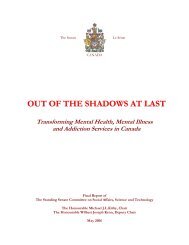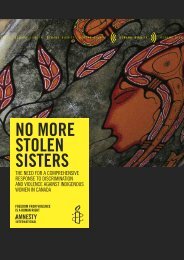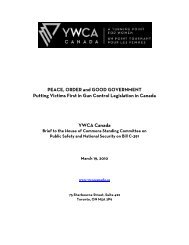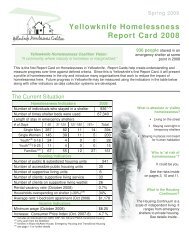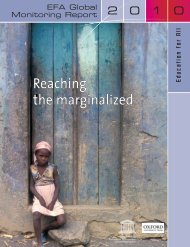The economic dimensions of interpersonal violence - libdoc.who.int ...
The economic dimensions of interpersonal violence - libdoc.who.int ...
The economic dimensions of interpersonal violence - libdoc.who.int ...
- No tags were found...
Create successful ePaper yourself
Turn your PDF publications into a flip-book with our unique Google optimized e-Paper software.
THE ECONOMIC DIMENSIONS OF INTERPERSONAL VIOLENCE1.2 An ecological framework for assessing the <strong>economic</strong><strong>dimensions</strong> <strong>of</strong> <strong><strong>int</strong>erpersonal</strong> <strong>violence</strong>To assess the <strong>economic</strong> <strong>dimensions</strong> <strong>of</strong> <strong><strong>int</strong>erpersonal</strong> <strong>violence</strong>, it is necessary tounderstand the causes and identify the factors that increase the likelihood <strong>of</strong>people becoming victims and perpetrators <strong>of</strong> such <strong>violence</strong>. According to theWRVH no single factor can explain why one individual, community or society ismore or less likely to experience <strong><strong>int</strong>erpersonal</strong> <strong>violence</strong>. Instead, the Reportshowed that <strong><strong>int</strong>erpersonal</strong> <strong>violence</strong> is a complex phenomenon rooted in the<strong>int</strong>eraction <strong>of</strong> many factors ranging from the biological to the political. Tocapture this complexity, the WRVH adopted an ecological model that organizesthe risk factors for <strong><strong>int</strong>erpersonal</strong> <strong>violence</strong> <strong>int</strong>o four <strong>int</strong>eracting levels: theindividual level, relationships, community contexts and societal factors(Figure 1).Figure 1Ecological model for understanding <strong><strong>int</strong>erpersonal</strong> <strong>violence</strong>Societal Community Relationship IndividualIndividual-level risks include demographic factors such as age, incomeand education; psychological and personality disorders; alcohol andsubstance abuse; and a history <strong>of</strong> engaging in violent behaviour orexperiencing abuse.At the relationship level, factors such as poor parenting practices andfamily dysfunction, marital conflict around gender roles and resources,and associating with friends <strong>who</strong> engage in violent or delinquentbehaviour increase the risk for most types <strong>of</strong> <strong><strong>int</strong>erpersonal</strong> <strong>violence</strong>.<strong>The</strong> community level refers to the contexts in which social relationshipsoccur such as neighbourhoods, schools, workplaces and otherinstitutions. Poverty, high residential mobility and unemployment,social isolation, the existence <strong>of</strong> a local drug trade, and weak policiesand programmes within institutions increase the risk <strong>of</strong> <strong><strong>int</strong>erpersonal</strong><strong>violence</strong>.Societal-level risks are broad factors that create a climate in which<strong><strong>int</strong>erpersonal</strong> <strong>violence</strong> is encouraged, including <strong>economic</strong>, social,health and education polices that ma<strong>int</strong>ain or increase <strong>economic</strong> andsocial inequalities; social and cultural norms that support the use <strong>of</strong><strong>violence</strong>; the availability <strong>of</strong> means (such as firearms) and weak criminaljustice systems that leave perpetrators immune to prosecution.4










